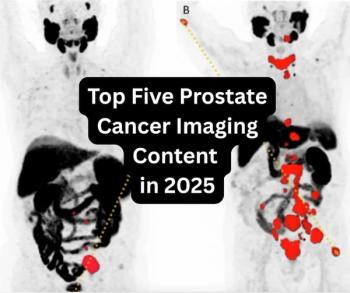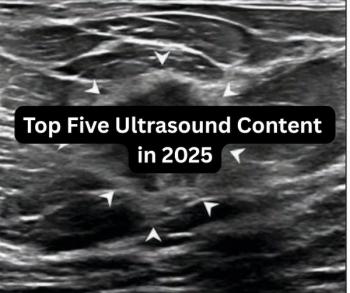
Study Shows BPE Quantification on MRI Helps Predict Risk of Breast Cancer Recurrence
Researchers found that several measurements of background parenchymal enhancement (BPE) on dynamic contrast-enhanced MRI were linked to a 27 to 66 percent higher risk of breast cancer recurrence.
The combination of quantitative background parenchymal enhancement (BPE) measurements and tumor radiomics may help clinicians determine low, intermediate, and high risk of breast cancer recurrence.
In a retrospective study, recently published in
The study authors found that multiple BPE measurements in ipsilateral and contralateral breasts were associated with increased risks, ranging from 27 to 66 percent higher risks, for breast cancer recurrence.
Some of the specific BPE measurements were as follows:
• 31 percent increased recurrence risk for relative absolute BPE within the fibroglandular tumor (FGT) to FGT volume (%BPEF/F) at a 20 percent cutoff rate in the ipsilateral breast
• 59 percent increased recurrence risk for relative BPEF to breast volume (%BPEF/B) at a 30 percent cutoff rate in the ipsilateral breast; and
• 41 percent increased recurrence risk for relative %BPEF/B at a 30 percent cutoff rate in the contralateral breast
“This retrospective study showed ipsilateral and contralateral DCE MRI BPE measures quantified in patients with breast cancer can be used to distinguish patients with high risk from those with low or intermediate recurrence … ,” wrote lead study author Dooman Arefan, Ph.D., an assistant professor of machine learning/AI, medical imaging and radiology at the University of Pittsburgh School of Medicine, and colleagues.
The researchers also found that combining DCE MRI BPE measurements with tumor radiomics had a more pronounced prognostic impact in estimating patient risk for distal recurrence.
“In the development set, we further showed that combining radiomic features with quantitative BPE measures in both breasts provides additional information beyond contralateral BPE measures (AUC, 0.94 vs. 0.73) … in informing distant recurrence risk,” noted Arefan and colleagues.
The researchers added that four key features utilized in the tumor radiomics included average wash-in slope, average peak enhancement, standard deviation of tumor pixel intensity and median tumor pixel intensity.
(Editor’s note: For related content, see “
Beyond the inherent limitations of a single-center retrospective study, the researchers noted the cohort was restricted to women with estrogen receptor-positive breast cancer. The study authors also acknowledged that model performance in the study may have been affected by the use of systemic chemotherapy for a significant number of high-risk patients in the cohort.
Newsletter
Stay at the forefront of radiology with the Diagnostic Imaging newsletter, delivering the latest news, clinical insights, and imaging advancements for today’s radiologists.




























